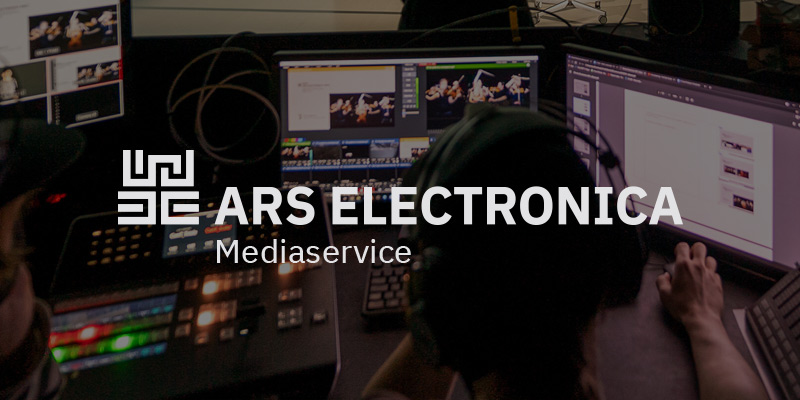Ars Electronica Futurelab at the 2014 European Capital of Culture opening event
Spaxels over Umea
Further Links
press release: “Spaxels over Umea” / PDF
photo album: Spaxels
Video: Spaxels Testflug im November 2013
(LINZ, February 2, 2014) The big celebration launching the northern Swedish city of Umea’s term as European Capital of Culture got underway at 5 PM on Saturday, February 1. Along for the ride were 30 Ars Electronica Futurelab quadcopters, which took to the sky for a five-minute performance during which they formed the Umea logo and the configuration of stars on the EU flag. This precisely choreographed flight under frigid conditions presented quite a challenge. “Sending a quadcopter swarm aloft in such low temperatures was a pretty tricky assignment, especially with respect to the performance of the batteries,” noted Chris Bruckmayr, Spaxels Business Manager at the Ars Electronica Futurelab. “Our flight during this show was the first we’ve ever attempted under such conditions.” The quadcopters were part of the show produced by phase7 performing.arts. It was commissioned by Umea 2014 European Capital of Culture.
Umea 2014
Umea and Riga, Latvia are Europe’s 2014 Capitals of Culture. The official opening event in the northern Swedish city of Umea kicked off on Saturday, February 1 at 5 PM. The thick sheet of ice covering the Ume älv river provided a stylish alfresco stage for a breathtaking multimedia performance featuring light, music and dance amidst a mystical winter landscape. Providing the dramaturgical framework were the eight seasons of the Sami, an indigenous Finno-Ugric people inhabiting the Arctic area of northern Norway, Sweden, Finland and Russia’s Kola Peninsula.
Spaxels in Linz, London, Bergen, Ljubljana, Brisbane and Umea
The Ars Electronica Futurelab’s quadcopter swarm was the main attraction at the 2012 voestalpine Klangwolke. An audience of over 90,000 was on hand to witness a world record: the first outdoor formation flight of 49 quadcopters. For the premiere of the film “Star Trek: Into Darkness” in March 2013, the Ars Electronica quadcopters thrilled onlookers in London where 30 computer-controlled drones formed the legendary Starfleet logo in the night sky above the Thames. Shortly thereafter, these so-called spaxels starred in the spectacular opening show at the Bergen International Festival staged jointly by the Ars Electronica Futurelab and phase7. In June 2013, the swarm visualized the opening concert at the Ljubljana Festival with an impressive aerial ascent from Ljubljana Castle. During the August 2013 celebration marking the opening of Queensland University’s new campus in Brisbane, the quadcopter formation made its first appearance in the Southern Hemisphere. And the “We Are Here” extravaganza that opened the most recent Ars Electronica Festival in September 2013 was also the public debut of the whirlybirds’ new and considerably brighter LED system.
ARS ELECTRONICA Futurelab in Linz, Austria
The Ars Electronica Futurelab has been exploring the future at the nexus of art, technology and society since 1996. The laboratory’s staff includes experts in a wide array of fields. The way they carry out assignments is characterized, above all, by transdisciplinarity and international networking. The essence of this approach is ongoing collaboration with artists and scientists worldwide as well as the regular presence of artists-in-residence in Linz. The spectrum of services the Ars Electronica Futurelab delivers is based on expertise and sills developed over many years in such fields as radical innovation, media art, architecture, design, interactive exhibitions, virtual reality and real-time graphics. The lab is a division of Ars Electronica Linz GmbH, a wholly-owned subsidiary of the City of Linz.
phase7 performing.arts
Director and media artist Sven Sören Beyer founded the phase7 performing.arts collective in 1999. Beyer’s cross-media aesthetic, his fascination with technical innovation, and an interdisciplinary approach have characterized phase7’s productions right from the outset, and the Berlin media artists’ network quickly made a name for itself worldwide. Its work consistently focuses on the nexus of human beings and technology, and on the interaction of reality and virtuality. Computer & software specialists and performing & visual artists have collaborated in developing a totally distinctive artistic vocabulary. The selective use of leading-edge technology such as motion sensing, robotics and wave field synthesis transports theater into the new millennium. This uncommon coupling of performing arts and state-of-the-art developments in media art has resonated worldwide. phase7’s itinerary has included appearances at Dance Camera West in Los Angeles, the New Vision Arts Festival in Hong Kong and in Stavanger, Norway during its year as European Capital of Culture in 2008. Selected projects phase7 has produced since 1999: “city particles” (2004), a short film about dance that has been screened at international festivals including the American Dance Festival; the official opening ceremony of the German Chancellor’s Office in 2001; “C-The Speed of Light,” an opera during the Einstein commemorative year and Summer of Science 2005 in Berlin; the closing ceremony of Stavanger’s Capital of Culture year featuring a chorus of 800 singers performing before an audience of 30,000; and “delusions,” a cross-media performance staged at the Stuttgart State Opera’s Forum Neues Musiktheater.
Photo:
Spaxels over Umea / Håkan Larsson / Printversion / Album
Photo:
Spaxels over Umea / Ars Electronica Futurelab / Printversion / Album
Photo:
Spaxels over Umea / Ars Electronica Futurelab / Printversion / Album
Photo:
Spaxels / Christopher Sonnleitner / Printversion / Album
A Spaxels testflight in November 2013

